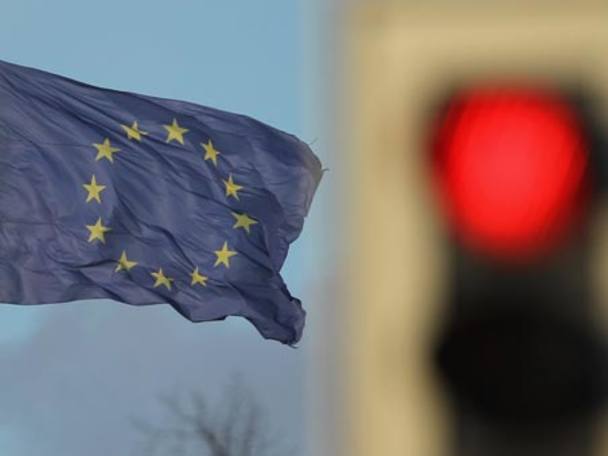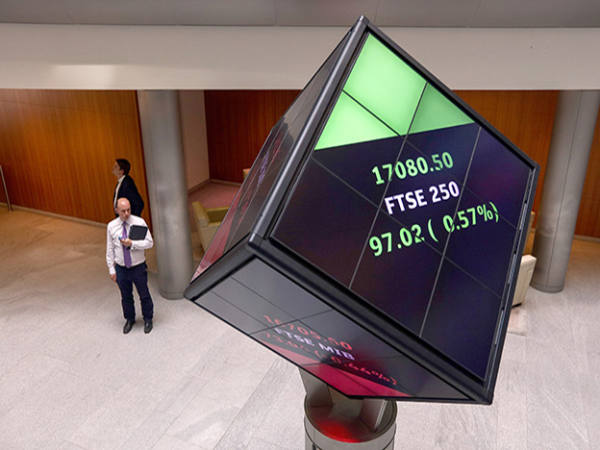June was all about the UK referendum, with the result in the early hours of 24 June coming as something of a shock to financial markets. Following a near 10 per cent drop in early trading, to the surprise of many, the FTSE 100 attracted strong buying. It finished the day only 3.2 per cent down. The rally continued with the FTSE 100 finishing the month up 4.4 per cent and at the highest level since August last year.
The more domestically-oriented FTSE 250 Index did not enjoy such strong support, closing the month down 5.3 per cent. In overseas markets, Continental Europe suffered some fallout from the Brexit vote. The German Dax and the French CAC were down 5.7 per cent and 6.0 per cent, respectively. In Japan the Nikkei fell 9.6 per cent but in the US the S&P was flat as expectations for the timing of the next interest rate hike were pushed further out. Gold received a boost as investors ran for cover, gaining 8.7 per cent on the month while oil traded sideways, with Brent crude up just 1.4 per cent.
Some perspective
In September 1992 I was sitting on a beach on the Costa del Sol enjoying my summer holidays. That was in the days before everyone owned a mobile phone and when one was able to disappear on holiday for two weeks, completely oblivious to what was going on in the outside world. The first day back at the office was invariably spent catching up on all that had happened while you were away. That was a proper holiday, a chance to recharge one’s batteries and life carried on without one having to be permanently in touch.
I digress. On returning from holiday, I switched on the car radio at Gatwick and remember the shock of hearing that interest rates had just been hiked from 10 per cent to 12 per cent and then to 15 per cent. This was a last desperate attempt to shore up the pound and maintain the UK’s place in the Exchange Rate Mechanism (ERM). By the end of the day, of course, the chancellor, Norman Lamont, was singing in his bath and the game was up. The UK left the ERM and was free to reduce interest rates and let sterling fall to its natural level.
There are some parallels to the current situation. Back in 1992 the prime minister did not resign but his chancellor eventually fell on his sword. Sterling plummeted, depreciating by 15 per cent against the US dollar, from 2.04 to the pound on 9 September to $1.70 on 21 September, before finally bottoming a further 17 per cent lower at $1.40 in February 1993. The UK economy emerged from recession, helped by the competitive boost from the devalued pound and lower interest rates. Inflation was widely forecast to spike upwards but the doom-mongers were proved wrong. Having stood at 2.6 per cent in 1992, the Retail Price Index fell to 1.9 per cent in 1993 before picking up a little to 2.9 per cent in 1994. The UK stock market took off, with the FTSE 100 up more than 50 per cent over the next 18 months. It was not just the overseas earners that drove the market on but UK domestic companies benefiting from the economic boost from devaluation and lower interest rates.
Thus far, initial reaction in the stock market has been similar to 1992, with defensive overseas earners such as tobacco, alcohol, food and pharmaceuticals companies leading the way. UK domestic consumer orientated sectors, particularly retail, travel and housebuilding, have been badly hit. There seems to be an overwhelming consensus forming that the UK is heading into recession and again there is talk about a jump in inflation. I grant you there is not much scope to cut rates this time but the governor of the Bank of England has been quick to reassure that it will loosen the monetary purse strings as necessary.
I suspect that things will not turn out as bad as currently feared given the huge competitive boost to the UK economy from sterling devaluation. After all, every major central bank has been trying to achieve what the UK electorate succeeded in doing in a few short hours on 24 June: a competitive devaluation. What would the governor of the Bank of Japan give to be in Mark Carney’s shoes?
Performance
A month to forget! My portfolio recorded its second-worst month since January 2012, dropping 6.9 per cent. This compared with the 2.8 per cent return of the FTSE All-Share Total Return Index. Since the start of the year the JIC Portfolio has lost 10.7 per cent, compared with the +4.3 per cent return from the All-Share, and since January 2012 is up 98.1 per cent versus +44.5 per cent, giving an annualised return of +16.4 per cent against +8.5 per cent for the Index. I don’t like giving up my hard-earned gains but given the exposure to small- and mid-cap stocks, it was perhaps inevitable following the result of the referendum.
Performance would have been worse but for my investment trust holdings with their overseas and US dollar exposure. BlackRock World Mining (BRWM) was the best-performing stock, gaining 19.8 per cent. Who would have thought back in January when the Royal Bank of Scotland economist told us to “sell everything” that BlackRock World Mining would be up 60 per cent since then! Including dividends, I am now up 6.0 per cent on this holding; sometimes patience is a virtue. Fidelity Asian Values (FAS) gained 11.2 per cent, Baillie Gifford Shin Nippon (BGS) 7.1 per cent and Worldwide Healthcare 5.0 per cent.
Recruitment companies Interquest (ITQ) and Matchtech (MTEC) were down 46.6 per cent and 34.6 per cent, respectively. Holiday company On The Beach (OTB) dropped 29.6 per cent, easyJet (EZJ) 29.2 per cent and Dixons Carphone (DC.) 27.7 per cent. In all these cases the market is fearing the worst.
Activity
A busy month. I introduced a number of new holdings, taking the number up to my self-imposed maximum of 30. I bought inter-dealer broker Tullett Prebon (TLPR) on a forecast prospective dividend yield of 5.0 per cent. I added FTSE 250 outsourcing company Serco (SRP). This is a recovery play, which I think is through the worst after two years of hard firefighting by new chief executive Rupert Soames. The balance sheet has been repaired, it has extricated itself from underperforming contracts, disposed of non-core businesses and introduced greater discipline to its tendering process. Recent news has been encouraging and I think from here on, the share price will benefit from the company delivering improved results, to a still sceptical market.
I bought back in to RedstoneConnect (REDS). It has just changed its name from Coms and is another recovery story. Under new management, it has rid itself of its loss-making telecoms company and is focusing on its successful core Redstone business and its ‘Smart Building’ offering. Having dipped my toes in, I attended the annual meeting on 27 June, after which I increased my holding a little further.
I think the severe drop in some sectors following the referendum was overdone with what looked like outright panic selling. I took advantage of what I think will turn out to be bargain prices. I added Lloyds Banking (LLOY) to the portfolio at 54p, down 30 per cent on the pre-referendum price. I was pleased to see the chief executive and a number of other directors adding to their holdings at these levels. I added another housebuilder, Persimmon (PSN), on a 30 per cent drop in the share price on 24 June.
I added to a number of existing positions: Conviviality (CVR), Fairpoint (FRP), Interquest, easyJet, Dixons Carphone and On The Beach. I funded these purchases by booking some profits in the portfolio’s largest holding, Baillie Gifford Shin Nippon and by selling the DAXglobal Gold Mining ETF. I never feel that comfortable holding gold, preferring to be invested in stocks that will pay me a growing dividend. The jump in the price of gold, enhanced by sterling’s depreciation, enabled me to book a decent profit.
Looking forward
In my last monthly I concluded by saying “I don’t know what the result will be and neither do I know how the markets will react. Rather than take out some hedging, which could prove wrong and expensive, I have decided to take the long view and take the markets as they come in the next month or so. I guess I’ll start to see if that was the right decision on 24 June!”
I guess the long view has got slightly longer and it may be an uncomfortable summer. I will look to rebalance the portfolio where appropriate but I’m loathe to chase many of the larger/defensive-type stocks that have moved up 15-20 per cent in the past few weeks. I will continue to focus on stocks where I think the dividend will grow and, at the very least, is safe.
The key to long-term growth is to reinvest those dividends and benefit from the compounding effect over the years. I am expecting around £2,710, 0.9 per cent of the current value of the portfolio, in dividends during the third quarter alone. I will be reinvesting those dividends into stocks, at attractive valuations, which will hopefully help recover some of the portfolio’s recent losses and contribute to its long-term appreciation.
John Rosier’s portfolio (end of June)
| Name | EPIC | Market cap (£m) | % of portfolio |
|---|---|---|---|
| Baillie Gifford Shin Nippon | BGS | 216.6 | 7.3 |
| Fidelity Asian Values | FAS | 196.6 | 7 |
| AdEPT Telecom | ADT | 57.3 | 6.8 |
| European Assets Trust NV | EAT | 320.2 | 6.6 |
| Crawshaw | CRAW | 61.2 | 5.4 |
| BlackRock World Mining Trust | BRWM | 476.9 | 5 |
| Renew | RNWH | 205 | 3.7 |
| SafeStyle UK | SFE | 190.5 | 3.5 |
| Worldwide Healthcare Trust | WWH | 881.9 | 3.5 |
| Character | CCT | 101.6 | 3.3 |
| Avation | AVAP | 78.4 | 3.3 |
| Dixons Carphone | DC. | 3,684.70 | 3.2 |
| Conviviality | CVR | 315.6 | 3.2 |
| Biotech Growth Trust | BIOG | 357.1 | 3 |
| Inland Homes | INL | 120.2 | 3 |
| Bioventix | BVXP | 48.6 | 3 |
| easyJet | EZJ | 4,313.70 | 2.8 |
| XLMedia | XLM | 131.5 | 2.8 |
| Fairpoint | FRP | 48.6 | 2.8 |
| Vislink | VLK | 40.2 | 2.6 |
| Gem Diamonds | GEMD | 174.3 | 2.6 |
| Lloyds Banking | LLOY | 38,584.60 | 2.5 |
| Sprue Aegis | SPRP | 78 | 2.3 |
| Matchtech | MTEC | 89.6 | 2.3 |
| Tullett Prebon | TLPR | 740.8 | 2 |
| On The Beach | OTB | 256.3 | 1.9 |
| Persimmon | PSN | 4461 | 1.6 |
| InterQuest | ITQ | 18.7 | 1.3 |
| Serco | SRP | 1,223.80 | 1.1 |
| RedstoneConnect | REDS | 21.2 | 0.5 |
| Cash deposit | CD | 0.1 |









